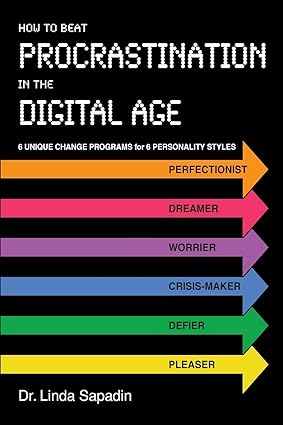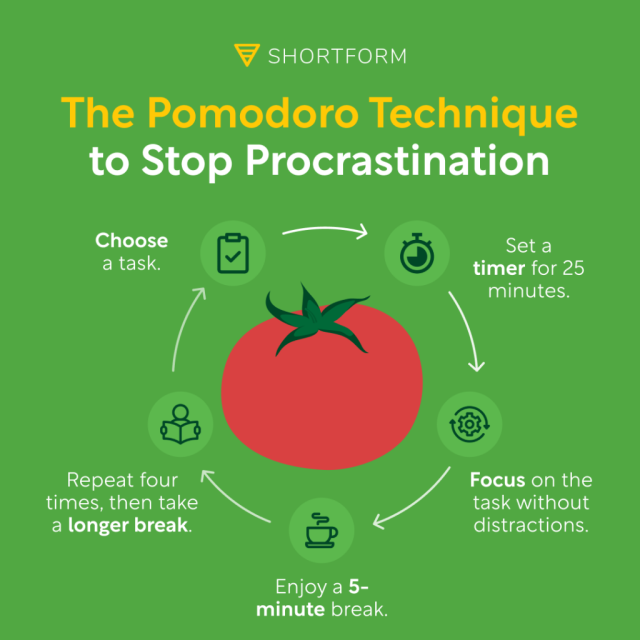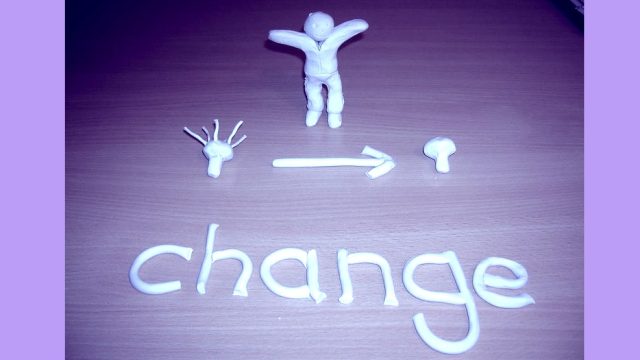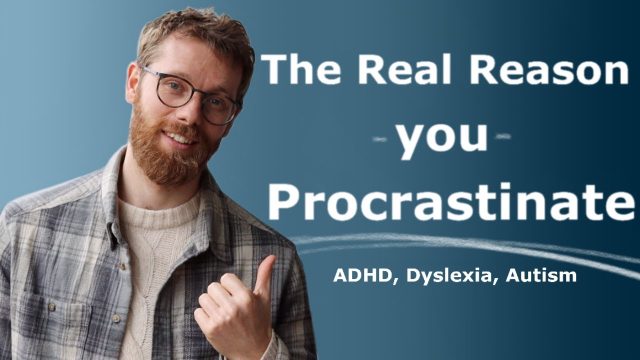Do it Now!
Leaving the Best for Last or just Procrastinating?

Rachel’s science project, worth 50 percent of her final grade, is due this Friday. She hasn’t even begun. There are only 3 days left and in the meantime, she has to go to school and work at her part-time job one shift this week. She also promised to clean her room by Saturday so she can go out with her friends over the weekend. She is overwhelmed, but is determined to buckle down and begin her project. She searches for the outline hidden somewhere under her piles of belongings but fails in her attempt. She quickly calls her friend for the info but an hour later finds herself still talking over the day’s events. She ends the call, only to realize she never did find out what her assignment was.
We’ve all done it… put things off. It has been estimated that the average person spends 218 minutes procrastinating every day, which means every year you might spend 55 days putting off tasks you really need to do. Procrastination is delaying or putting off tasks until the last minute, or past their deadlines. Most professionals agree it is an avoidance strategy but the cause for avoidance varies.
Procrastination is caused by the same things it creates: stress and anxiety. We avoid tasks because they overwhelm us in the moment and avoidance feels good momentarily. In “Davis” terms, it involves the basic instinct of human kind… to seek pleasure and avoid pain. For the moment, it’s easier and more pleasurable to avoid “that thing” and do something easier and more fun!
But there are good reasons to procrastinate as well. Moderate procrastination allows your brain time to mull over a task or problem, and create space for greater creativity and innovative ideas. Picture thinkers and creative innovators are great for this! So how do you know if this is a productive procrastination or just plain avoidance?
Basically, when you think of the task, does it bring anxiety and stress and tempt you to avoid or put off to a later date? Then you are likely procrastinating for avoidance, especially if frustration or shame underlies your decision.
Six Types of Procrastination

Dr. Linda Sapadin in her book, “How to Beat Procrastination in the Digital Age: 6 Unique Change Programs for 6 Personality Styles” identifies 6 types of procrastinators. The personality types range from The Worrier to The Pleaser.
The Worrier doesn’t start that important task because they don’t believe that they’ll be able to do it. They are often indecisive, lacking confidence, and have a high resistance to change, preferring the safety of the “known” over the “unknown.”
In a similar vein, the Perfectionist doesn’t start the task because they equate failure to not doing the task perfectly and put forth excessive amounts of time and energy to making sure everything is done perfectly.
The Pleaser and/or over-doer procrastinator commits to doing too many tasks and fails to prioritize. Underlying this is the fear of not living up to their own impossible standards, or the imagined impossible standards of others. They tend to suffer, take on more work than they can handle, and often find it difficult to relax without feeling guilty.
The ‘Crisis Maker’ believes they need the stress or pressure inherent in last-minute action to alleviate boredom and increase motivation. There is a question about the quality of work that evolves from this.
Whereas the Dreamer comes up with lots of ideas but the thought of work bores or frustrates them. They avoid expressing negative feelings; instead, they convey those feelings by procrastinating.
The Defier is often viewed as rebellious and underlying this is the belief “I shouldn’t have to do it!”. Procrastination is used to defy authority. They are pessimistic in nature, undercutting their motivation to complete tasks in a timely manner.
You can find many suggestions and ideas to overcome or decrease procrastinating tendencies. One way is to break down mountainous tasks into smaller tasks. For a picture thinker, this is easier said than done as they often lack the basic concepts needed to break down a task. For example, the job of cleaning the house could be broken down several ways from, emptying the dishwasher, vacuuming, and wiping down the countertops to making the bed. All of this is to be done in a timely fashion.
But for that person who experiences disorientation readily, this is a daunting task. First, the concept of time may be lacking which could potentially create delays e.g. thinking they have more time than they actually have. Then how do you decide what to do first to even make a list prioritizing tasks when you can’t decide what is most important, despite the fact it feels good to check off completed tasks. Here is where the concepts in a Davis Attention Mastery program can really help. It provides a roadmap for better organization and everyday functioning. It helps you focus on the job and can limit distractions.
A Davis Attention Mastery program helps to input basic ideas for someone to fall back on when approaching a task, therefore alleviating the anxiety or fear of doing something and avoiding procrastination. Sometimes what appears as a lack of motivation or just plain laziness is really a lack of skill.
The Pomodoro Technique

The Pomodoro Technique breaks tasks into reasonable chunks and rewards you with regular breaks: Whenever you are faced with work that you’ve put off via procrastination, you should tackle it in precisely timed intervals with a short break between each interval. After several work intervals have passed, you can take a longer break. But by using the Pomodoro method, you’re assured that the work will be broken into manageable chunks. The Pomodoro Technique is effective because it makes long-delayed items from your to-do list seem less intimidating. If you know that you’ll only have to work on a task in short intervals—and that you’ll be rewarded with regular breaks—you’re shielded from the dread of an interminable task.










